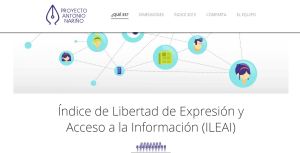This was originally written on Sunday, May 15, 2016. I’m deciding to share it now because I’ll be leaving Boston two weeks from today. I’ve learned so much here in the past eight weeks, and I’m ready to tackle my last semester of college.
What’s at the intersection of community and gratitude? Joy.
I’m home for 11 days before I head off to intern at WBUR in Boston. The days have flown by, but I’m grateful for the time and space to enjoy my childhood home—from the smells of toast, coffee and eggs in the morning to the lush green of the front yard brightened by the flowers my parents have planted to watching a movie from the 80s with my family. This is familiarity.
It’s a respite from the world of college and an oasis in the middle of transitioning into full-blown adulthood.
Getting home this time around wasn’t easy, but not because of logistics. Leaving Columbia was hard. I cried because I know I’m only a few months away from a final goodbye to my college, my home, my friends and my community. For the last part of finals week, I got a taste again of what it means to just play and have fun, which I need to do more often. I went on a spontaneous ice cream run with my roommate. I went to the Pinnacles. I watched the Sandlot for the first time. I played knockout and kickball.
And then life came knocking at my door. Well, it was actually more of my parents calling. They would be at my apartment in a few minutes to help me finish packing.
I said goodbye to my friends. I drove down Stadium Boulevard, windows down, warm summer air rolling in, and I thought, “Man, this place is beautiful.”
I smiled this time instead of tearing up.
I turned right on Providence, passing Farout Field, thinking thanks, Columbia.
This idea of gratitude had been floating around in my head. A good friend of mine (who is also an inspiration) said among the plethora of thank you notes she had written, she had one for the owners of Uprise Bakery—which if you haven’t been, you should.
I kept turning that over in my head. How rich must her experience have been of Columbia’s different communities that she would write a thank you card to her favorite bakery. How fulfilling to look at life a little differently because of new places, people, food and experiences.
I went for a run after work that day. Sun streamed through green leaves as the wind rustled through the forest.
Who was I thankful for? A few people came to mind. What was I thankful for? I found myself struggling to answer this second question because I was thankful for a lot of good that happened to me: landing an internship, finding housing, earning a scholarship to fund the summer, getting good grades.
Those are things that I worked for, but the act of receiving them didn’t change me. I kept thinking what does it mean to be grateful?
First, it is knowing someone or something has changed who you are for the better, or in a way you never quite thought possible. Joy comes from that recognition, even if the process of change was hard. Then, a desire to evaluate what I value and how I act on those values.
That last part is the sticking point. You need to act. You need to make a decision to go somewhere, extend a helping hand, otherwise how will you be changed?
Saying thank you means we have to look outside of ourselves for a while, which isn’t necessarily an easy task but one that changes us from the inside out. I think practicing this attunes our senses to what’s happening around us. We listen closer, take more risks and love more openly.
So when I think about adulthood in the safety and comfort of my childhood home, I’m not so scared because I know being an adult is so much more than paying bills and fulfilling responsibilities. It’s about acting out what we believe, loving others and experiencing life in a such a way so that when we’re about to leave this earth we can say, “Thank you.”
This reflection on gratitude means I will do the following:
- Making time for play with a group of people that I really cherish.
- To find spots and people in my community that I click with.
- To find spots and people in my community that challenge me.
- To be more productive in the hours that I do work, so that in the hours that I don’t, there’s space for spontaneity.
- Finding places where I can volunteer even if it’s just for a short while
- I don’t want to open my book of life and see one word, “Work.”




